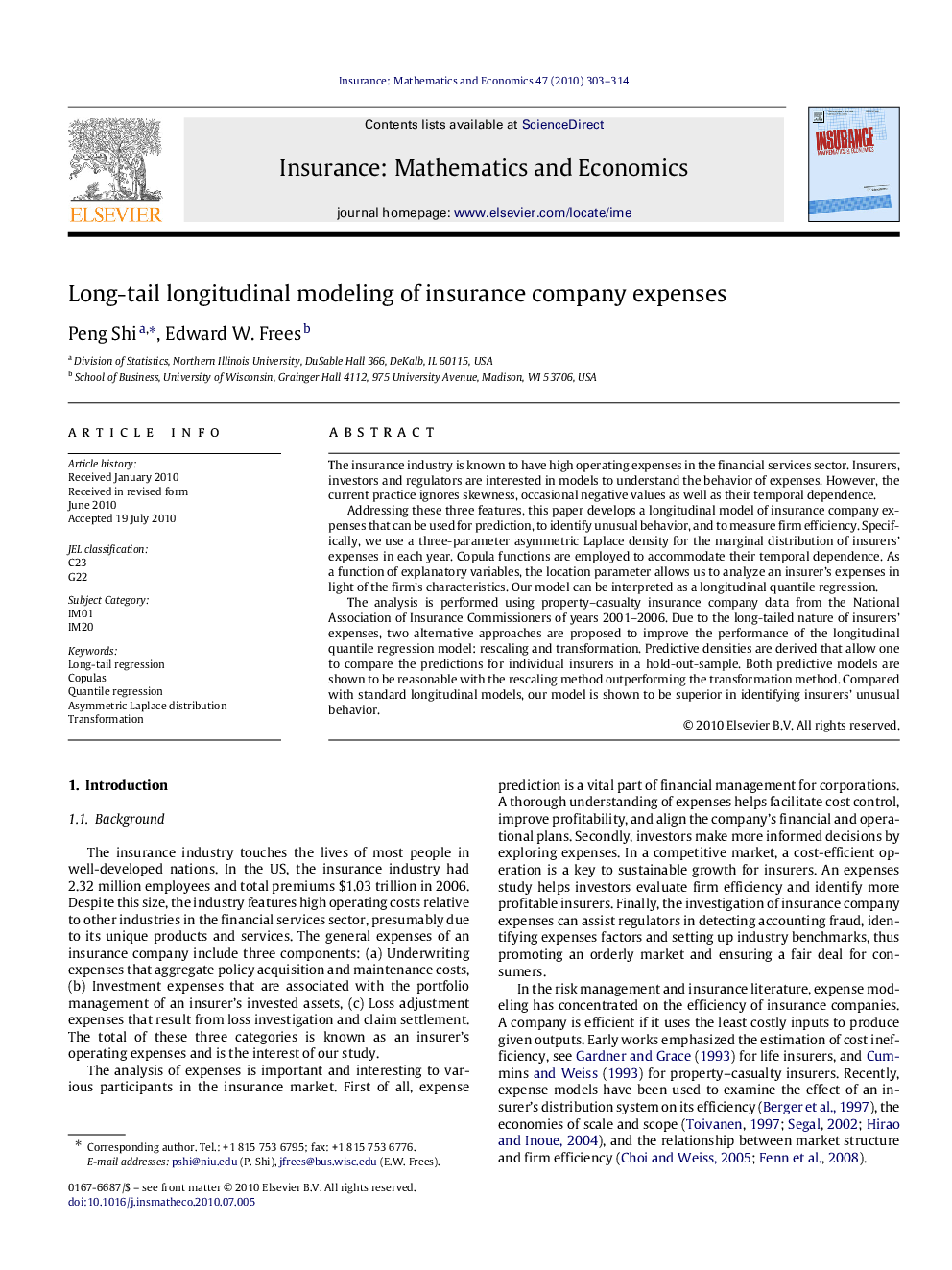| Article ID | Journal | Published Year | Pages | File Type |
|---|---|---|---|---|
| 5077330 | Insurance: Mathematics and Economics | 2010 | 12 Pages |
The insurance industry is known to have high operating expenses in the financial services sector. Insurers, investors and regulators are interested in models to understand the behavior of expenses. However, the current practice ignores skewness, occasional negative values as well as their temporal dependence.Addressing these three features, this paper develops a longitudinal model of insurance company expenses that can be used for prediction, to identify unusual behavior, and to measure firm efficiency. Specifically, we use a three-parameter asymmetric Laplace density for the marginal distribution of insurers' expenses in each year. Copula functions are employed to accommodate their temporal dependence. As a function of explanatory variables, the location parameter allows us to analyze an insurer's expenses in light of the firm's characteristics. Our model can be interpreted as a longitudinal quantile regression.The analysis is performed using property-casualty insurance company data from the National Association of Insurance Commissioners of years 2001-2006. Due to the long-tailed nature of insurers' expenses, two alternative approaches are proposed to improve the performance of the longitudinal quantile regression model: rescaling and transformation. Predictive densities are derived that allow one to compare the predictions for individual insurers in a hold-out-sample. Both predictive models are shown to be reasonable with the rescaling method outperforming the transformation method. Compared with standard longitudinal models, our model is shown to be superior in identifying insurers' unusual behavior.
